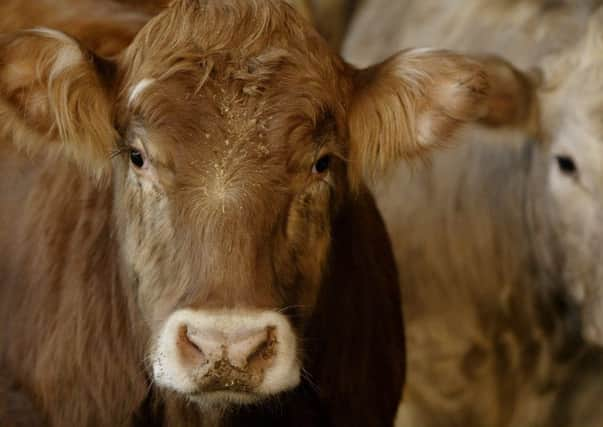Scotland’s fat cows puts calves at risk


Experts from Scotland’s Rural College (SRUC) are now warning livestock farmers they face a much higher risk of calving difficulties when overweight cows begin to give birth next month. In some cases, that could mean increased risk of death for the calves and major costs for farmers.
The “downside” of last year’s excellent summer weather has been highlighted in a report from the SRUC, established in 2012 through the merger of the Barony, Elmwood, and Oatridge Colleges and the Scottish Agricultural College.
Advertisement
Hide AdAdvertisement
Hide AdIt warns of the risks facing farmers if their cows are “overfat” as they approach calving time. According to the report, last year’s cold spring was followed by a warm season with good grass growth, producing excellent quality silage and hay which has led to livestock putting on unexpected weight.
And if farmers have not adjusted their feeding regime to account for the increased nutrition, then overfat cows could have caving problems.
Dr Basil Lowman, beef specialist with the college’s con-sulting wing, said he had noticed the weight problems facing some cows among herds he had visited this winter.
He said: “Some producers are concerned about the condition of their cows and the potential for a much higher risk of calving difficulties when calving starts in a month’s time.”
He explained that producers of suckled calves already knew that difficulties at calving time are often linked to the genetics of the cow and her calf or by the management of the cow and her condition at calving.
Calving difficulties can also lead to major costs. Calves which are slow to be delivered can be at greater risk or even die. Cows which experience calving difficulties can also experience increased infertility.
Dr Lowman warned that, in extreme cases, calving problems could lead to premature culling of cows at well below their potential market value.
He and his colleagues are now calling on suckled calf producers with herds due to calf this spring to set aside an hour – preferably with a friend, a neighbour or vet – to walk among their cows and judge how fit they really think they are. The aim is to identify which cows, if any, need to be urgently slimmed down and put on a special diet.
Advertisement
Hide AdAdvertisement
Hide AdDr Lowman said: “If there are a proportion of obese cows, with rings of fat clearly visible around their tail-head then these should be drawn out into a separate group and put onto a well-balanced, straw-based ration to encourage them to lose as much fat as possible prior to calving.
“This may seem just extra costs and hassle but compared with severe calving difficulties, caesareans or even casualties it will be time and money extremely well invested.”
A college spokesman also stressed: “It is essential that the protein and mineral/vitamin intake of the cow is maintained, otherwise their rumen will become impacted and they will die, so feeding only straw is not possible.”
Alastair Martin, the livestock committee chairman of the National Farmers’ Union Scotland, urged farmers to heed the advice.
He said: “It’s helpful that this warning has come out so early in the year from SRUC. It is the right time to consider this advice as it is roughly six to eight weeks before spring calving and farmers still have time to put measures in place if need be.”